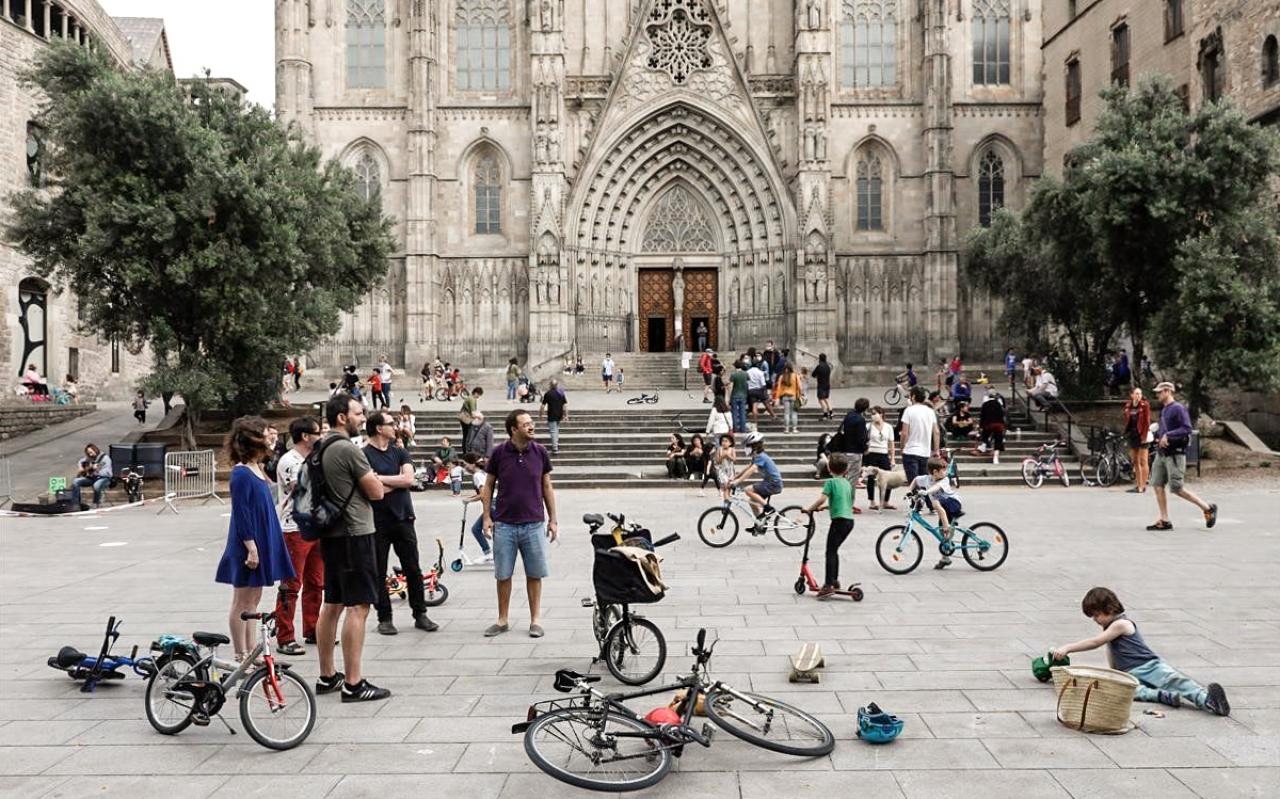
A closer view to the public space transformations in Barcelona and its metropolitan area, which have been accelerated due to the pandemic
In recent years, the metropolitan area of Barcelona has been developing strategies to change the model of the city, shifting from the predominance of polluting private motorised vehicles to active mobility, increasing the space used for walking and cycling, and moving around in public transport. The pandemic has sped up this transformation process, which involves searching for and applying new solutions to create a more inhabitable, sustainable, healthier and fairer metropolis.
Throughout the months of the health crisis, several municipal measures were promoted to encourage sustainable mobility and guarantee social distancing. These measures included increasing pedestrian spaces with car-free streets, safe and accident-free pacified areas with no noise and air pollution, reducing the speed of motorised traffic, and extending and consolidating bus lanes and cycle routes. Temporary safe itineraries were also established to be able to walk and do sport while maintaining social distancing, and access facilities such as markets, health centres, schools and parks. Furthermore, at weekends some critical routes in terms of volume of traffic (like the Via Laietana) were included into the 'Obrim carrers' (Let's Open the Streets) programme with the slogan 'There's a lot going on where cars don't enter', transforming the city's thoroughfares into people-friendly spaces.
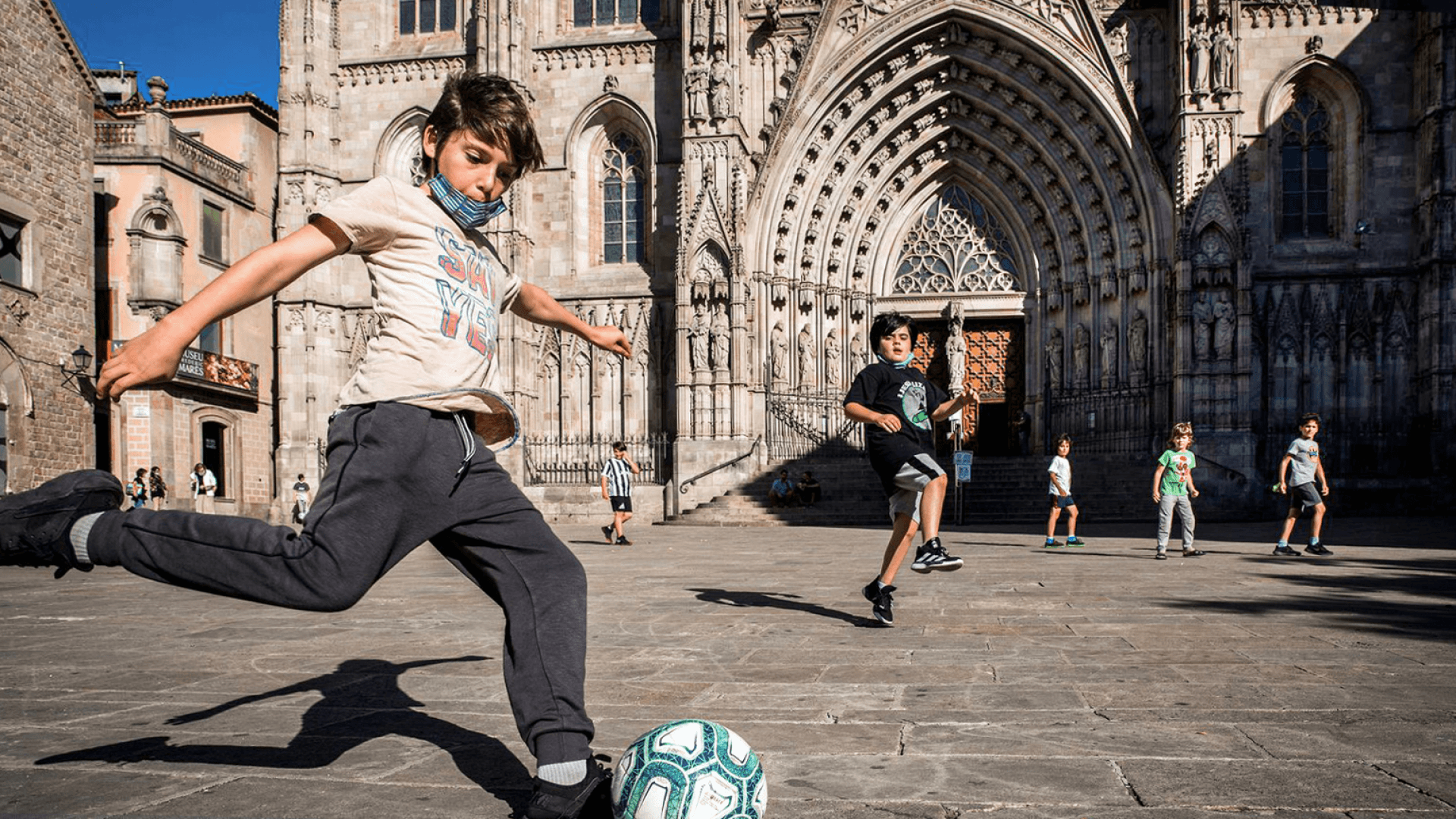
The links between COVID-19 and urban mobility provide opportunities to obtain immediate and long-term health benefits. At the beginning, there was a rise in the use of cars and motorcycles as people were concerned about keeping physical distance between each other; however, at the same time there was an increase in active transport, such as cycling and walking. The challenge is to re-establish confidence in the use of public transport. We have a critical opportunity to make positive long-lasting changes to health by more active, inclusive and sustainable urban mobility solutions.
For some years Barcelona has been in favour of tactical urbanism, a tool used in many other cities around the world to quickly change the use of public space, to achieve significant impacts with quick, low-cost and reversible actions that convert the city into an urban laboratory, where alternative functional models are tried out to respond to these urgent challenges and check whether they satisfy the community's needs.
These tactical urban planning initiatives are highly visible and by just painting coloured strips in streets or adding urban furniture and flower boxes that can be moved if necessary, it is easy to highlight the new temporary uses given to public space and establish new relationships between citizens and the urban space that often used to be reserved in its entirety for motorised vehicles.
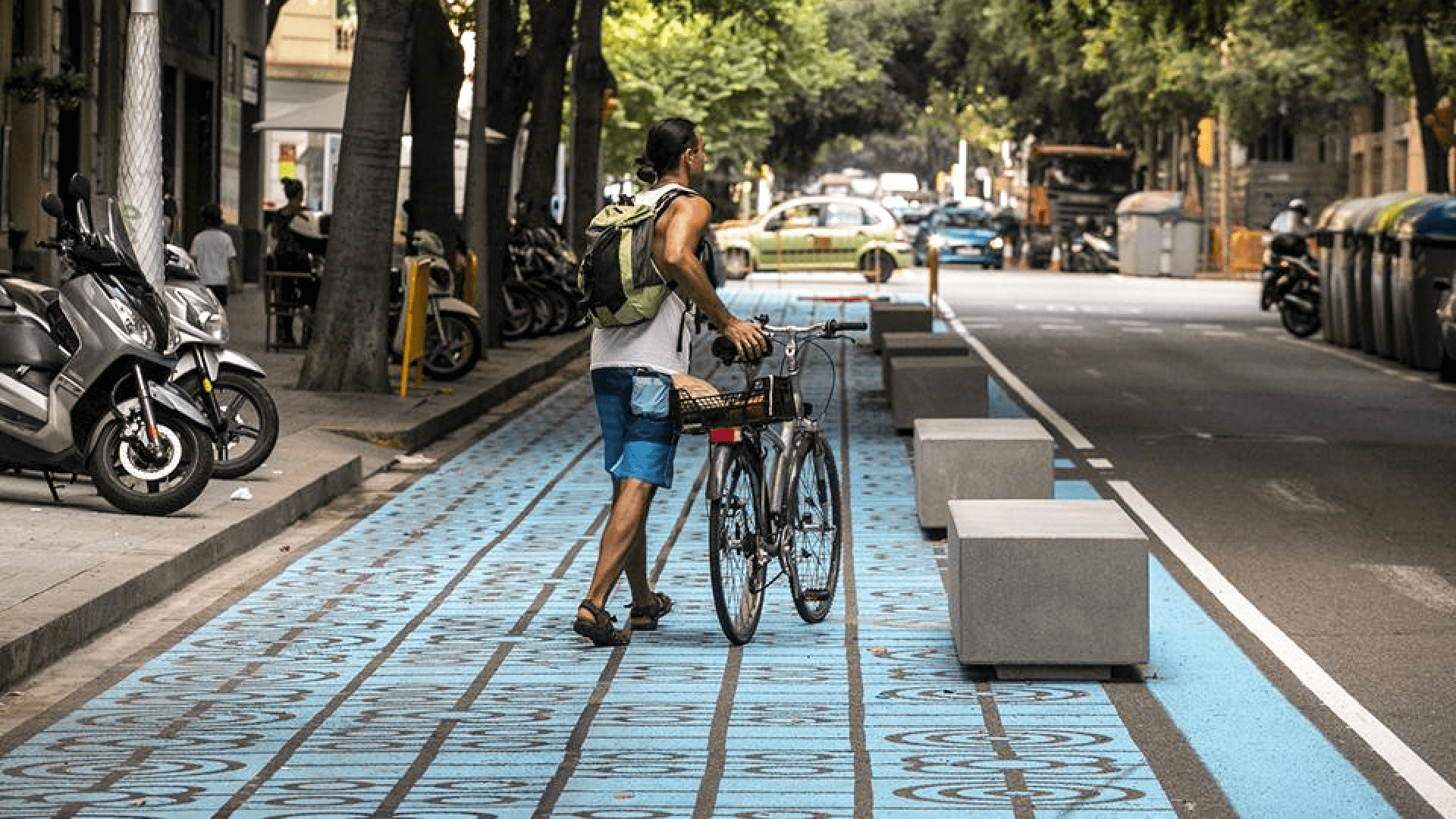
The need to gain space for citizens during the pandemic led to taking action in many streets. This resulted in a new fabric of pacified areas to maintain social distancing and gain more walking space; new squares and places for sitting down were created, and the areas surrounding schools were protected, with safe, traffic-free accesses and areas for playing and socialising. Likewise, in busy streets and ones where pavements were very narrow, large concrete platforms were built to widen pavements, which were decorated with trees planted in big pots.
The pandemic also led to urgently authorising new bar and restaurant terraces or extending those that already existed. The extra space on streets was gained by using large concrete blocks and pylons, using parking space instead of in detriment of pedestrian areas, thus reversing the standards.
To create safe and new cycle routes, in both urban and metropolitan areas, the AMB planned to build a further 75 km of 'Bicivia', the metropolitan cycling network, of which 70 km are tactical, to be implemented immediately by painting road surfaces; the remainder are previously planned strategic connections.
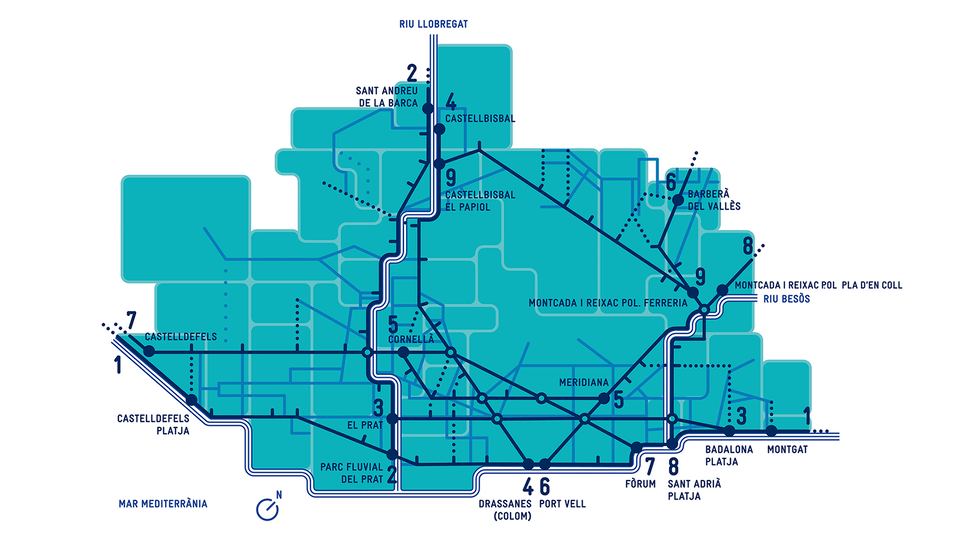
Barcelona was also based on an obsolete model of city, with a large part of its streets and commercial premises dedicated to the tourist industry. With the closure of borders and mobility restrictions, these places suddenly saw themselves empty, useless and decontextualised, and they no longer made sense in a city where there are currently no leisure demands for tourists, in terms of streets (shops, bars and restaurants) and uses (tourist accommodation, cultural attractions, etc.). Given this unwanted scenario, local residents managed to recover their possession of parts of the city, recovering uses that had been put to one side in benefit of the monopoly of tourist exploitation, such as peacefully strolling along the Rambla, playing ball in the Catedral Square or having the chance to visit emblematic facilities like the Sagrada Família, which has been open to citizens.
Strict lockdown also took the pressure off the city's limited number of green spaces, which, due to the spring, burst into life with exuberant vegetation and fauna much less stressed by human impact. This clearly showed the benefits and brought to light the need to rethink the relationship with nature, making it possible to alter the conception of urban green spaces and advance towards ecological management and the promotion of nature. Strategies were developed that consider biodiversity as one of the central values of a quality urban space, such as not cutting back herbaceous plants and bushes to let them bloom, the gradual substitution of asphalt with surfaces that have better drainage and green areas that can lower temperatures, increase humidity and provide shade from the sun, thus achieving cleaner air and, in conclusion, a healthier metropolis.
The capacity limitations of closed spaces made it difficult to open shops, bars and restaurants, as well as prevented cultural and sports facilities from continuing with their normal programmes; however, at the same time, it was an opportunity to bring many of these activities outside into the open air, thus contributing to their democratisation and having a very positive impact on citizens' physical and mental health. The restrictions also boosted local commerce and many people (re)discovered neighbourhood shops. All this accompanied by good weather resulted in a more intensive use of streets, squares, parks, gardens and sports areas, which became the main places for leisure, get-togethers and public life. This had a positive effect on citizens' coexistence and clearly showed that public spaces are indispensable for promoting health and well-being, social relationships, and they also help to keep the city alive at a business, cultural and social level.
The progressive recovery of pacified public spaces is necessary, and it must guarantee social diversification of uses and activities that have to coexist simultaneously in the same space at the same time. It must also create a balance between right of use and health safety, paying special attention to people in vulnerable situations, guaranteeing a cross-cutting and non-discriminatory approach, using resources in a sustainable way for a fairer, friendlier, greener, more inclusive and resilient metropolis.
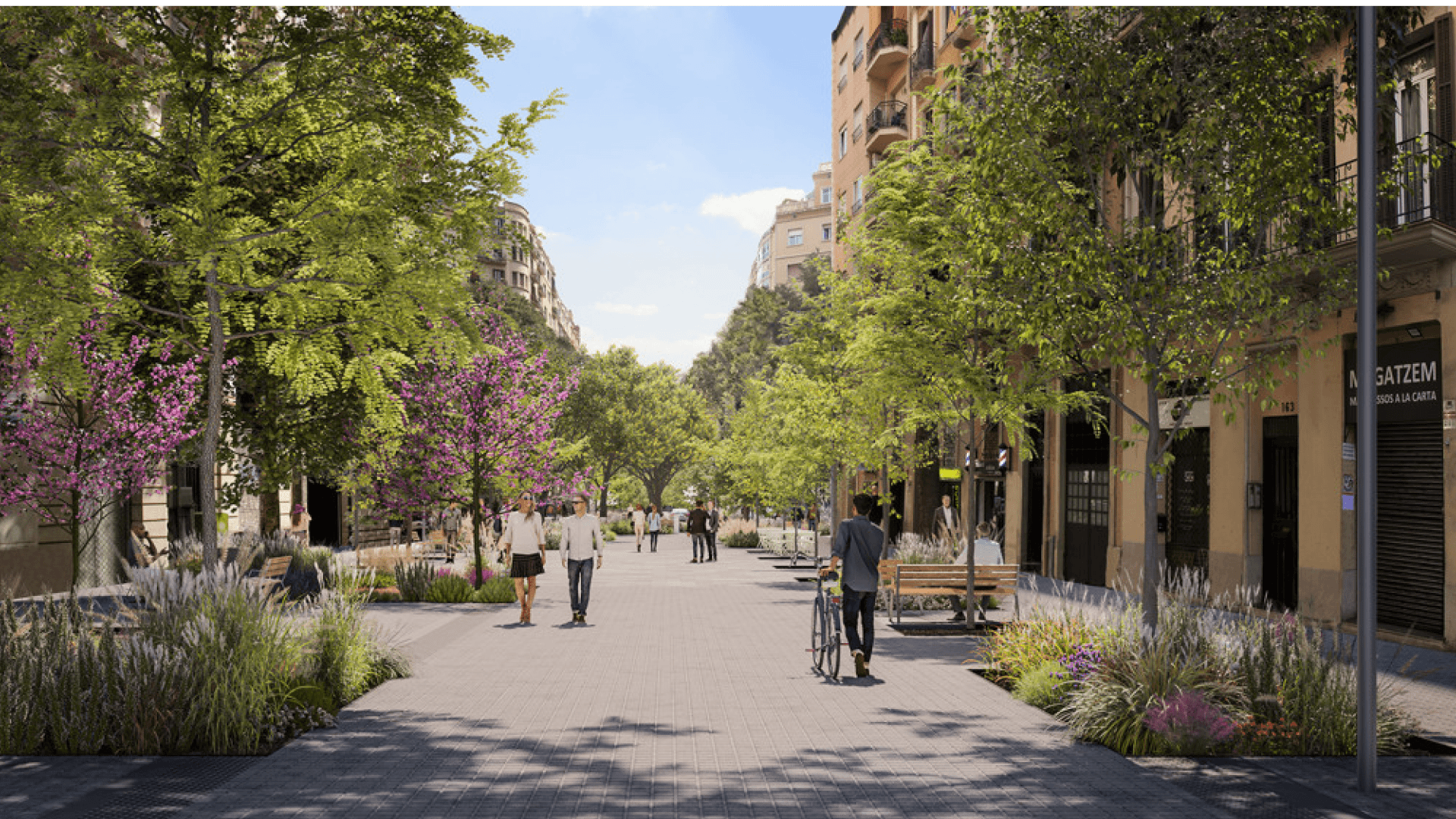
Therefore, it is important to decide whether many of the measures that are being applied temporarily could be of a permanent nature, and to study their feasibility. Actions that in some cases have already turned into structural elements, extending their implementation to the framework of the 'Superilla Barcelona' (Barcelona Superblock) project, a green axes competition to define the model of a '21st-century street', which will progressively be implemented in Barcelona, with priority on pedestrians, leisure, relaxation, green spaces and biodiversity.
Stela Salinas is the Communication officer of RiConnect. She is an architect and designer, and she works in the Public space department of the Barcelona Metropolitan Area (AMB).
Cover image: kids playing in the formerly tourist-crowded Cathedral Plaza in Barcelona by Ferran Nadeu / El Periódico. Image sources: AMB and Ajuntament de Barcelona

